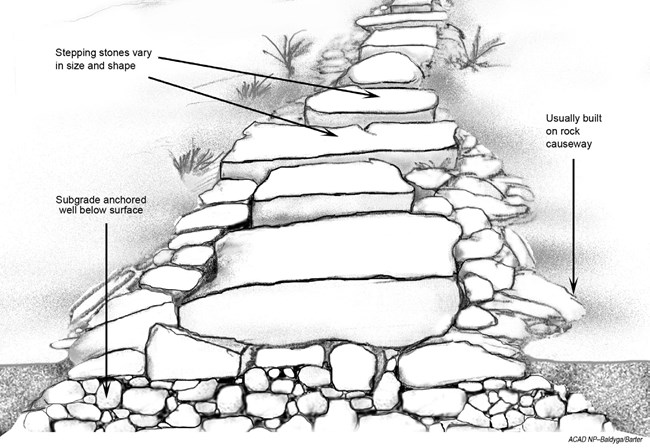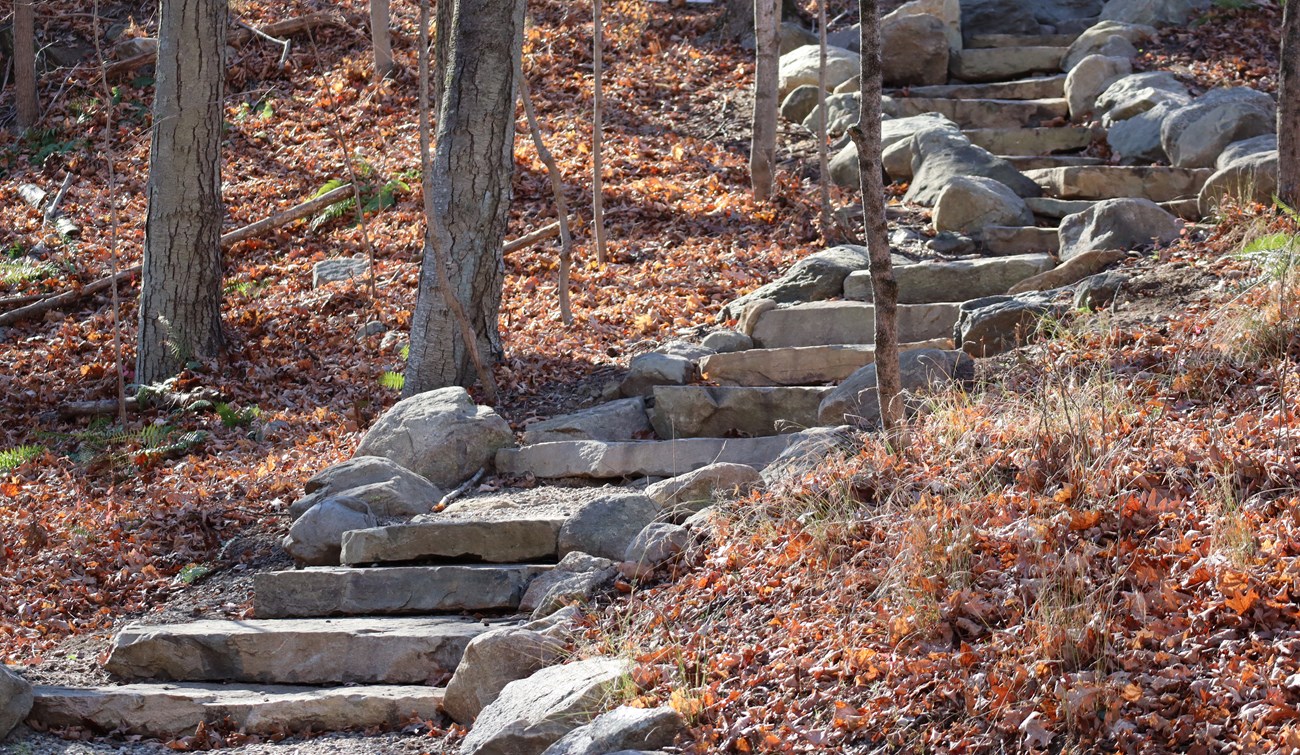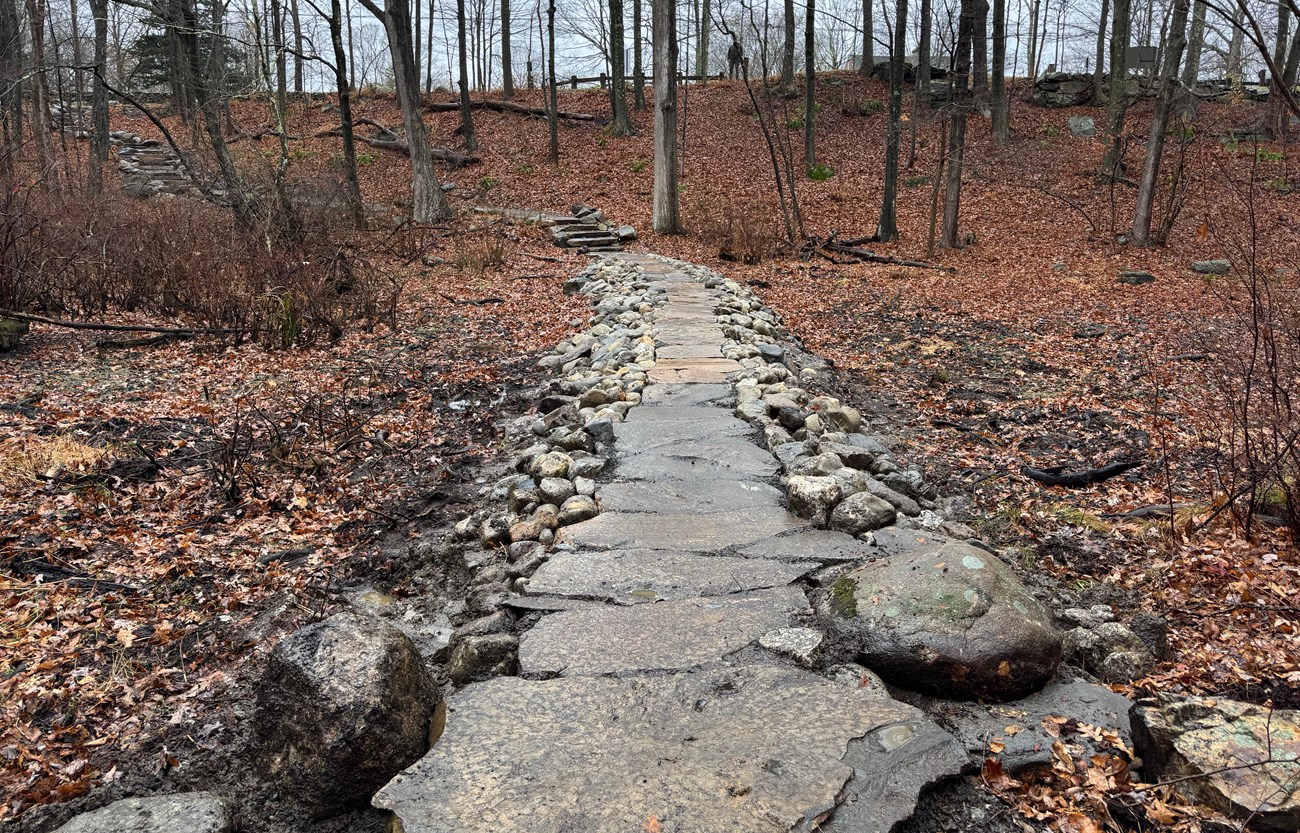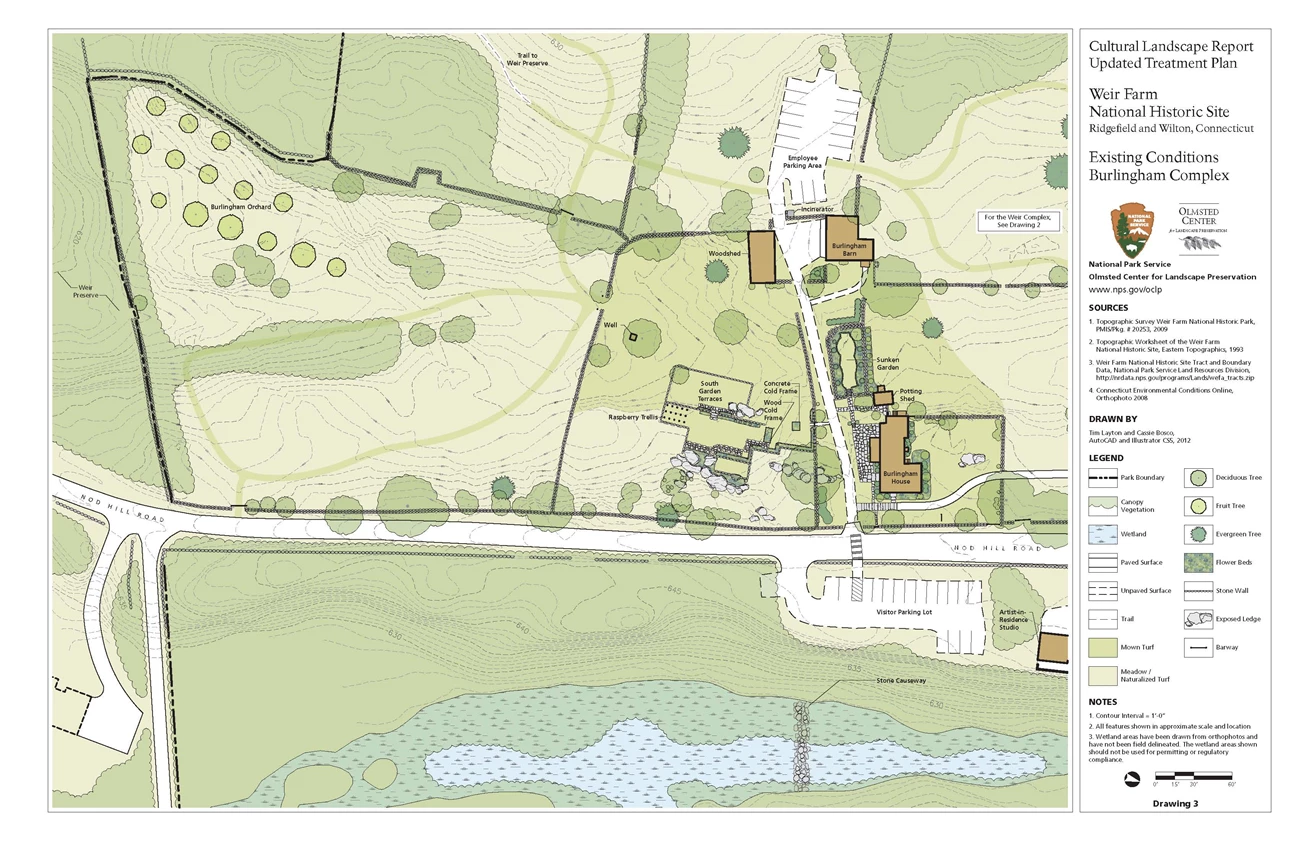Last updated: May 21, 2025
Article
Weir Farm National Historical Park Constructs New Stone Causeway
The Weir Farm landscape was the home, workplace, and inspiration to American painter Julian Alden Weir from 1882 to 1919. Weir was drawn to the location by the scenic qualities of the Connecticut landscape, and he made an effort to preserve the rural setting and agricultural use of the existing farm. The landscape is associated with other artists of the American Impressionist movement, and it was also home to American sculptor and Weir’s son-in-law Mahonri Young from 1931 to 1957.
Some of the aesthetic features of the property also had practical purposes. For example, stone causeways became a common feature in southwest Connecticut, as farmers needed to cross wetland areas to access their fields.
A stone causeway was part of the landscape before Julian Alden Weir’s purchase of the property in 1882. It was originally constructed by building up layers of stone to form a raised corridor traversing a wetland area. Overtime, the path deteriorated and vegetation grew among the stones.

NPS / Olmsted Center for Landscape Preservation
Building the Causeway
In early 2025, Weir Farm National Historical Park completed a two-year project to build a native stone causeway. The causeway is based on the historic precedent in this cultural landscape, and its restoration was a treatment objective of the park's Cultural Landscape Report.
NPS
The route connects the visitor center parking area with Weir Pond via a wetland where livestock once grazed. A series of boulders that served as stepping stones formerly delineated the route through the wetland. To provide an improved trail for visitors and avoid building a dam in the wetland hydrology, park staff developed a design for a permeable causeway.
The base of the causeway would be composed of rounded rock, known in Connecticut as “gargoyles”, that would allow water movement through the causeway, connecting one side of the wetland to the other.

NPS
Internationally renowned mason Neil Rippingale, proprietor of NR Stonecraft, returned to the park the following year for the construction of the remaining part of the route, consisting of the stone causeway. Monthie engaged Rippingale to lead the effort and coach staff and volunteers to help him build.

NPS

NPS

NPS / Olmsted Center for Landscape Preservation


